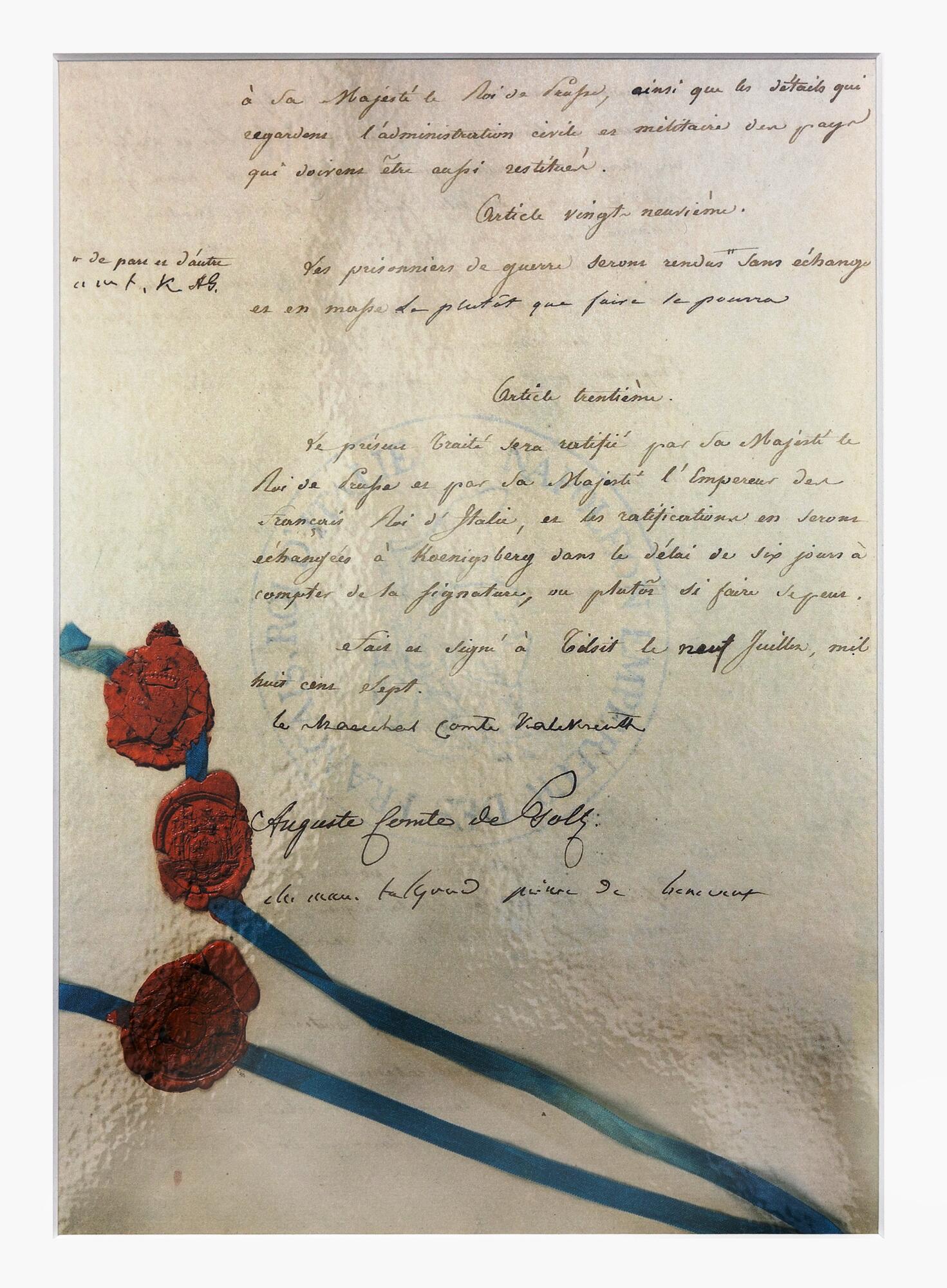A copy of the peace treaty concluded between France and Prussia in Tilsit on July 9, 1807 was donated to the Museum of History of the city of Sovetsk by a resident of Berlin Gerhard Zeideman. The original treaty is housed in the Secret State Archive of Prussian Cultural Heritage (Berlin, Dalem). The full translation of the Franco-Prussian peace treaties, prepared by Ilya Dementiev, Associate Professor at Kant Baltic Federal University, was first published in the collection of scientific articles “Kaliningrad Archives” (Kant Baltic Federal University, 2011). This document describes the relationship between France and Prussia as a result of Napoleon’s famous swift defeat of the once-renowned Prussian army in 1806.
The French emperor hatched plans to dismantle the Prussian state, and only the intercession of Alexander I allowed Friedrich William III to retain the title and the remnants of his power. This was explicitly stated in Article 4 of the Russo-French treaty signed at Tilsit in 1807.
Russian historiography has not traditionally paid much attention to the Franco-Prussian peace treaties, concentrating on the analysis of the Tilsit Treaty between Russia and France. However, the Franco-Prussian agreements of that time help to recreate the context of the complex relations between the three countries.
The Franco-Prussian Treaty at Tilsit was signed on July 9, the day the main agreement between Russia and France was ratified. The Kingdom of Prussia lost nearly half of its population and a large part of its territory, retaining only four provinces — Brandenburg, East Prussia, Pomerania, and Silesia. The lands west of the Elbe, including Magdeburg, were destined for the new Kingdom of Westphalia. Prussia thus returned to the 1772 borders before the first partition of Poland.
Under the Franco-Prussian peace treaty, Prussia, along with territorial concessions, was obliged to reduce the army to 40,000 men, pay a contribution of 100 million francs and join the Continental blockade system. The Peace of Tilsit meant the greatest national humiliation for Germany and led to the growth of the national liberation movement.
In assessing this treaty,
historians usually do not spare grim tones.


